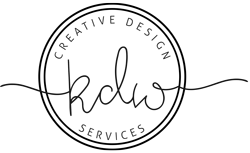The Internet of Things (IoT) continues transforming how we live and work by connecting everyday objects to the Internet, allowing them to communicate with each other and with us. However, designing IoT devices comes with its own unique set of challenges.
Table of Contents
From device selection and integration to data security and privacy, there are several complexities when creating a successful IoT system.
Security
As the popularity of IoT devices continues to grow, so do the cyber threats they face. With the ability to collect and transmit sensitive data over the Internet, IoT devices must be designed with security in mind. However, many of these devices have low computing power and inadequate security measures, leaving them vulnerable to attack.
Protecting sensitive data and user privacy is essential. To ensure the safety of IoT devices, it’s important to prioritize their security during the design process. By implementing robust security measures and staying up-to-date with the latest advancements, IoT devices can provide a secure and trustworthy user experience.
Connectivity
IoT devices need an internet connection to run smoothly, but sometimes they encounter connection problems which can result in partial or total loss of connectivity. This can significantly hamper their performance, resulting in data and revenue loss.
To ensure reliable device connectivity, designers should consider implementing long-range wireless protocols. These low-power options are beneficial in areas with weaker signals. One effective method for achieving connectivity is through a thorough network survey of the device’s operating location. This survey can help determine the best protocol for maximum reliability.
Power Consumption
One of the challenges of IoT devices is power consumption, which can affect the device’s performance and user experience. Whether running on an internal battery or using a power outlet, continuous monitoring or data transmission can drain power quickly.
As a result, it’s vital to assess battery life and usage to optimize device function and enhance the user’s overall experience.
The key to overcoming device power challenges is reducing power consumption. This can be achieved by using low-power components, managing the device’s processor usage, and minimizing data transmission.
Essential to this is designing efficient, power-optimized software. Doing so will extend battery life and enable the device to function for prolonged periods without frequent charging.
Compatibility
IoT devices need to be compatible with different systems, protocols, and devices. Compatibility is critical because IoT devices are part of an ecosystem consisting of various devices and platforms. This can be a daunting task for designers who must ensure that the device can operate seamlessly with an array of technologies.
To tackle this obstacle, designers need to delve into researching the various systems and protocols that the device must engage with. Once they have a sound understanding, they can tailor the device to be compatible with these intricate systems. Additionally, it’s important to conduct compatibility testing to guarantee smooth integration with other services.
Data Processing
IoT devices generate vast amounts of data that must be processed and analyzed to extract actionable insights. However, this can be difficult when dealing with devices with limited processing capabilities. To enable quick decision-making and response, data must be processed in real-time, which presents a unique challenge.
Designers faced with the challenge of dealing with large amounts of data should consider edge computing as a solution. In edge computing, data is processed and analyzed at the device rather than sent to the cloud.
This approach reduces the amount of data transmitted to the cloud, saving bandwidth and enabling quicker response times. It also means that AI algorithms can be embedded in the device to make real-time decisions, reducing the amount of data that needs to be sent to the cloud for analysis.
Reliability
Reliability is one of the critical aspects of IoT device design. IoT devices are expected to operate continuously and reliably without breakdowns, even under adverse conditions. This poses a significant challenge for designers, who must ensure that the device can withstand harsh environments and remain operational.
To overcome this challenge, designers must conduct rigorous testing to identify the device’s weaknesses and vulnerabilities. The test should simulate challenging conditions under which the device would operate, such as high temperature, humidity, or low light conditions.
The device can operate reliably under different conditions by conducting extensive testing and using robust materials.
The Future of IoT Device Design
Designing an IoT device is no simple feat. But with the latest technologies like edge computing and AI algorithms, designers can create more efficient devices that can handle vast amounts of data even under challenging conditions.
Overcoming challenges like compatibility with different systems, reduced power consumption, and reliability are crucial to developing successful IoT products. By leveraging cutting-edge technologies, designers can create IoT devices that meet the needs of today’s fast-paced, data-driven world.
——-
Author Bio:
Guido Voigt
Guido Voigt is the Director of Engineering, at Lantronix, a global provider of turnkey solutions and engineering services for the internet of things (IoT). Guido’s and Lantronix’s goal is to enable their customers to provide intelligent, reliable, and secure IoT and OOBM solutions while accelerating time to market.








